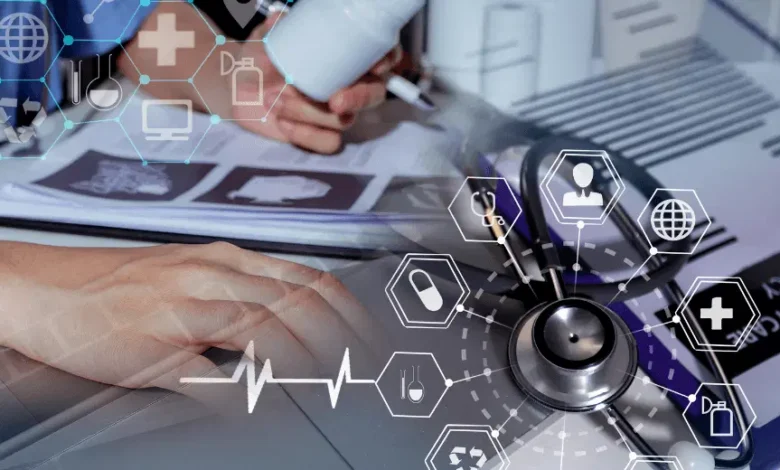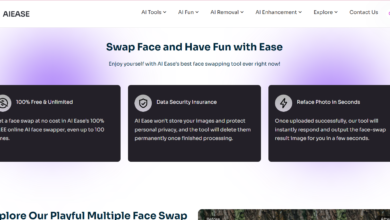Revolutionizing Healthcare Communication: How Technology is Transforming Hospital Management and Patient Outreach

In today’s fast-evolving digital world, the healthcare industry faces a constant demand for improved efficiency, patient satisfaction, and operational accuracy. Whether it’s maintaining medical records, coordinating departments, or sending appointment reminders—every function in a hospital must work like a well-oiled machine. This is where innovation in hospital communication and management becomes pivotal. Two technological advancements making waves in healthcare operations are hospital management systems and the ability to print and send letter online. Together, these tools are transforming how hospitals operate and communicate with patients.
The Need for Efficient Hospital Operation
Hospitals are some of the most complex organizations in the world. They deal with a vast range of activities such as patient care, pharmacy management, billing, administration, medical inventory, and compliance with legal regulations. Managing these components manually or with outdated systems often results in inefficiencies, errors, and delays in service delivery.
A modern healthcare facility must operate with precision, especially in a post-pandemic era where digital transformation has become a necessity rather than a luxury. Real-time access to data, seamless interdepartmental coordination, and automation are now expected.
Enter Hospital Management Systems
To streamline workflows and increase efficiency, hospitals are increasingly adopting hospital management system software. These platforms integrate all aspects of hospital operations into a unified digital system. From registration and appointment scheduling to billing and discharge, everything is managed within one digital dashboard.
Let’s explore the key features of a hospital management system and how it adds value to healthcare organizations:
1. Patient Record Management
A centralized database stores all patient records, including medical history, test results, imaging, and prescriptions. This eliminates duplication and ensures continuity of care, even if a patient is transferred between departments.
2. Appointment Scheduling and Queue Management
Patients can schedule appointments online, reducing congestion at reception counters. The system can also automate queue management to minimize wait times.
3. Billing and Insurance Processing
Automated billing calculations based on treatment plans, insurance integration, and real-time updates help reduce human errors and ensure transparency.
4. Inventory and Pharmacy Control
The system monitors drug inventory, tracks expiry dates, and automatically alerts staff about low stock. This ensures that essential medications and supplies are always available.
5. Compliance and Reporting
Hospitals need to comply with numerous healthcare laws and standards. A good management system can generate necessary reports to ensure audits and compliance checks are smooth and error-free.
6. Staff Management
From scheduling shifts to calculating payroll and evaluating performance, the system simplifies HR operations.
Bridging the Gap Between Hospitals and Patients
While internal operations are important, external communication is equally crucial. Hospitals regularly send documents such as test results, discharge summaries, billing statements, appointment reminders, and follow-up letters to patients and other healthcare providers. Traditionally, this has involved time-consuming manual processes and often led to delays or errors.
Fortunately, modern solutions now allow hospitals to print and send letter online, reducing the manual workload and ensuring timely communication.
Benefits of Online Letter Printing and Mailing for Hospitals
Let’s examine why switching to an online print-and-mail service makes perfect sense for hospitals:
1. Improved Efficiency
Automating the process of letter creation and dispatch allows healthcare staff to focus on patient care instead of paperwork.
2. Secure and Compliant Communication
Reputable providers offer HIPAA-compliant services, ensuring patient information remains secure during the printing and mailing process.
3. Customizable Templates
Hospitals can set up templates for different communications like invoices, reminders, or discharge letters, ensuring brand consistency and reducing turnaround time.
4. Faster Turnaround
Documents can be printed and mailed within 24 hours of upload, meaning patients receive critical information on time.
5. Tracking and Reporting
Online platforms provide tracking information for each mailed letter, ensuring accountability and traceability in patient communications.
Real-World Applications in Healthcare
Here are some practical use cases showing how hospitals are using these tools in real-time:
- Automated Appointment Reminders: A hospital management system generates a reminder 24 hours before a patient’s appointment, and the system automatically uses an online mailing solution to deliver it via physical mail.
- Sending Lab Reports: Instead of asking patients to return to the hospital, reports can be securely printed and sent to their home addresses using online mailing platforms.
- Post-Discharge Care Plans: Hospitals can send care instructions, medication schedules, or physiotherapy guides directly to patients, ensuring better adherence and improved outcomes.
- Billing and Statements: Invoices or insurance summaries can be mailed promptly, speeding up payments and improving cash flow.
The Future of Healthcare is Integrated and Automated
Combining a robust hospital management system with the ability to print and send letter online creates a holistic approach to healthcare management. Hospitals can automate operations, improve communication, and enhance patient satisfaction—all while saving time and reducing errors.
With increasing pressure on healthcare systems worldwide, adopting these technologies is no longer optional—it’s imperative. Hospitals that embrace digital transformation can not only improve their service delivery but also create a safer, more efficient, and patient-centric environment.
Final Thoughts
Efficiency, accuracy, and communication form the backbone of a well-functioning hospital. With the right technological tools in place, hospitals can seamlessly manage their internal operations while maintaining high standards of communication with patients and stakeholders.
The future belongs to healthcare providers who are willing to adapt and evolve. Investing in a modern hospital management system and leveraging the ability to print and send letter online is a strategic move that brings long-term benefits—both operationally and in patient satisfaction.




